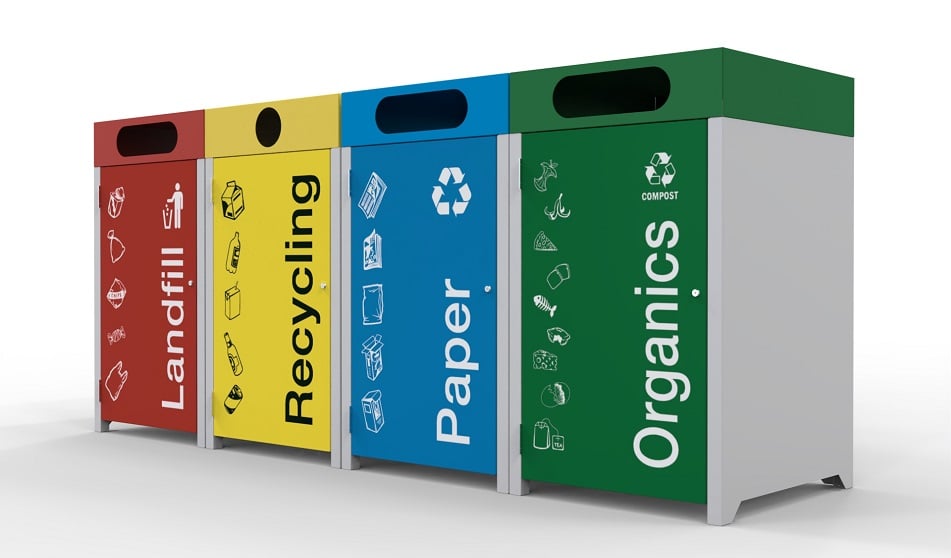What are the Different Waste Streams and what do they represent?

Are you trying to implement a waste management system at your facility but not exactly sure how the streams are meant to be correctly separated? This article is going to briefly run through all the different waste streams, what waste is included in what stream and what colour it generally coordinates with.
To begin, the most common stream that everyone is familiar with is ‘general waste’. But what exactly does general waste include? General waste includes any rubbish that cannot be recycled, meaning it will not rot, decay, or disintegrate over time and has little or no moisture content. Common materials that can be disposed of in a general waste bin include non-recyclable plastics, polythene, some packaging, and non-food kitchen scraps. This category of rubbish is generally disposed of in landfill sites. However, technological advancements now also allow several alternate ways of dealing with general waste that ensure energy is recovered from it. Rubbish that might often be seen at your facility for general waste includes, disposable coffee cups, packaging from chip packets or food wrapping, stationary such as pens or binders, plastic bags and tissues or paper towels. Although a packet of potato chips takes only mere minutes to devour, the packaging can take up to eight decades to decompose! Isn’t that astonishing! Astra recommends using the colour red for general waste, usually reflected on bin lids, coloured bin enclosure doors, covered top chutes or signage on the front of the bin itself.
The next most common stream is ‘recycling’. Any rubbish that is correctly disposed of in a recycling bin can be converted /broken down and reused to make new materials. Common materials that can be disposed of in a recycling bin include paper, cardboard, glass containers and bottles, aluminum, tin and steel cans, hard plastic bottles, and containers. It is important that containers or bottles are rinsed/washed out before they are placed in a recycling bin to ensure that food scraps or liquids do not contaminate the rest of the recycled rubbish. It may not be known, but plastic bags do not belong in this bin! Any recyclables that are in plastic bags will not be sorted so all items must be placed loosely in the recycling bin so the machines can sort them properly. Another piece of rubbish that is often debated is pizza boxes. Although pizza boxes are made of cardboard, they are only recyclable if they aren’t heavily stained with oil or pizza scraps. Heavily stained pizza boxes can go in the organics or compost bins instead. Is it now easier to know what can’t go in the recycling bin? Well, this includes things like clothes, shoes, bedding, polystyrene cups or packaging, light globes, mirrors, electrical appliances, batteries, or wooden items. Our recommended colour for recycling is yellow, usually reflected on bin lids, coloured bin enclosure doors, covered top chutes or signage on the front of the bin itself.
The next waste stream that is typically incorporated into a waste management system is ‘paper/cardboard recycling’. Although these materials can be placed in a recycling bin, most facilities have separated this rubbish, allowing it to have its own bin. When paper and cardboard are disposed of separately to other recyclable products it ensures that contamination does not occur from other rubbish materials and the regeneration process can begin sooner. Paper and cardboard are separated into like products, bailed and then taken to a processing facility where de-inking occurs. To give you a brief idea on how it is repurposed, the used paper is mixed with water to break down into a slurry of fibres. The slurry is then screened to remove any missed contaminants. Once cleaned, it is then mixed with new fibres to produce new paper. Paper/cardboard recycling bins are extremely popular and highly recommended for facilities that use these materials on a frequent basis such as office buildings, educational facilities, councils, and government departments. Normally, it takes approximately two to six weeks in a landfill to get completely decomposed, but can take decades, depending on moisture levels within the landfill. Recycling paper and cardboard items separately to general recycling is beneficial as it saves a lot of landfill space and recycling process time. The most popular colour for paper and cardboard recycling bins is blue, usually reflected on bin lids, coloured bin enclosure doors, covered top chutes or signage on the front of the bin itself.
One of the newer streams that is showing popularity across many establishments is the ‘organics’ waste stream. An organics waste bin includes compostable waste (food waste and plant-based waste like flowers), cooking oil, garden waste (sticks, twigs, leaves and grass clippings), compostable packaging, and fish & meat. Depending on where you are located, local councils are offering decomposable ‘green’ bags for use in the kitchen caddies that are made from a plant-based material which can go in the organics bin. Popular items that can’t go in an organics bin include plastic bags, bin liners, soil bags, stones, rocks or bricks, gardening tools or hoses, plant pots or trays, and painted or treated timber. It is important that the organics bin is used correctly as incorrectly disposed rubbish can contaminate the whole bin, preventing it from being composted. The time it takes for food waste to decompose depends on the type of food. To give you an approximate idea, an orange peel takes six months while an apple core takes around two months, and a banana peel takes two-ten days to decompose. The most common colour for organic waste bins is green, usually reflected on bin lids, coloured bin enclosure doors, covered top chutes or signage on the front of the bin itself.
Furthermore, from the above popular waste streams, some establishments go even further in separating their waste into separate bins for glass and plastics. E-waste such as electronics that require a cord or battery to operate such as televisions, phones, computer equipment, light fittings and whitegoods must follow the rules for operational waste. Methods on how electronics should be disposed can usually be found in user manuals that come with the product.
Getting behind these stringent waste management systems is easy! Astra Street Furniture encourages facilities to implement these waste management streams in any type of facility and have made it simple with the Athens Wheelie Bin Enclosure Suite. This suite includes plain and coloured bin enclosures that can be neatly banked up together to create a waste management system. There are red, yellow, blue, and green coloured doors and chutes available to highlight each of the different streams. Athens Bin Door Graphics are also available that include wording and symbols which makes it that step easier for users to know what rubbish can be disposed of in each bin! Has this article made you think about how your facility lacks a successful waste management system? Take a look at the Athens Wheelie Bin Enclosure range and see what you need to get your facility back on track!


 Seating
Seating Benches
Benches  Curved Benches
Curved Benches Commercial Picnic Tables
Commercial Picnic Tables Concrete Plinth Mount Seating
Concrete Plinth Mount Seating Litter Bins
Litter Bins Bin Enclosures
Bin Enclosures  Shelters
Shelters Bike Parking
Bike Parking Architectural Bollards
Architectural Bollards Planter Boxes
Planter Boxes Skate Deterrents
Skate Deterrents  Drinking Fountains
Drinking Fountains Outdoor Classrooms
Outdoor Classrooms Athens Suite
Athens Suite Barcelona Suite
Barcelona Suite Berlin Suite
Berlin Suite Copenhagen Suite
Copenhagen Suite Dublin Suite
Dublin Suite Florence Suite
Florence Suite Glasgow Suite
Glasgow Suite Liverpool Suite
Liverpool Suite London Suite
London Suite Madrid Suite
Madrid Suite Manchester Suite
Manchester Suite  Milan Suite
Milan Suite Orbit Suite
Orbit Suite Paris Suite
Paris Suite Prague Suite
Prague Suite  Portsmouth Suite
Portsmouth Suite Rome Suite
Rome Suite Venice Suite
Venice Suite  Vienna Suite
Vienna Suite Woodville Suite
Woodville Suite School Furniture
School Furniture Healthcare Furniture
Healthcare Furniture Local Government Furniture
Local Government Furniture Park & Street Furniture
Park & Street Furniture Shopping Centre Furniture
Shopping Centre Furniture Aged Care Furniture
Aged Care Furniture